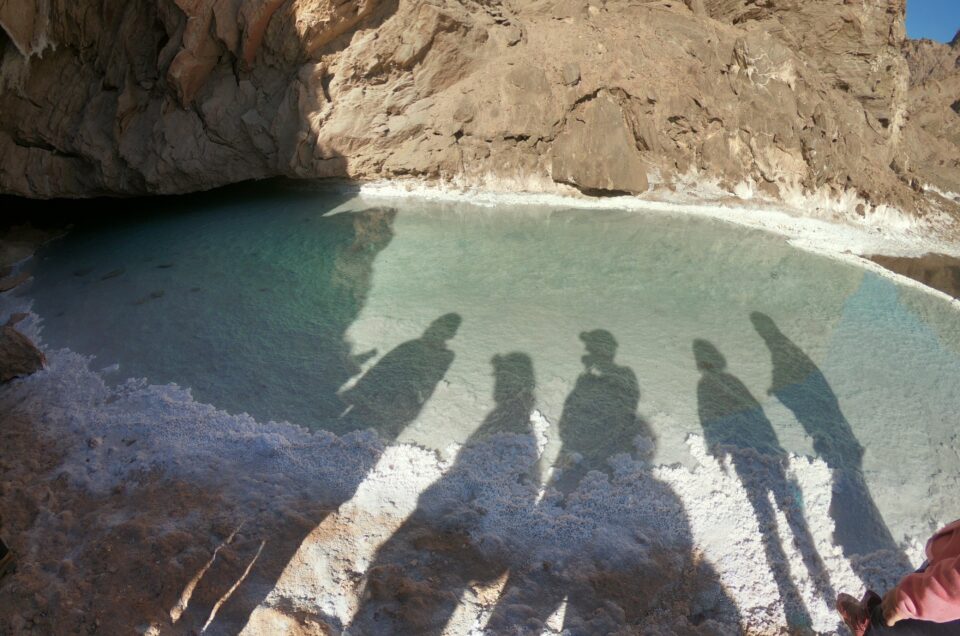The longest salt cave in the world (Namakdan Cave), with a length of six km, is located on Qeshm Island in the Persian Gulf, Iran. These salt domes dating back to approximately 550 million years ago—even before life flourished on the ground—have many unique parts, such as salt falls, salt springs, and salt caves, with various geological formations. Salt domes emerge in the areas that have weak surface structures and openings and appear as the salt domes on the earth’s surface. Rainwater gradually penetrates the salt Dome, allowing the water to dissolve the salt and enter it. Since the dissolution process varies across different areas, the sizes and shapes of these caves and openings differ; this results in large, open spaces in some locations, while in others, very narrow corridors form that require crawling to pass through.
Characteristics Some of the most amazing structures that can be found inside the Salt Cave are Stalactites and Stalagmites, as well as salt crystals (such as needle-shaped, round, or multi-faceted) formed by sedimentation of salt. Additionally, where water seeps into the ground, salt crystals form beautiful ponds at the bottom. One of the main attractions around the salt dome and the salt cave are geological structures that are composed of various layers of colourful minerals and stones. These are indeed gifts from the depth of the earth that have been brought to the surface through the rise of the salt dome. The age difference between these minerals and other geological structures on the island is over millions of years, and different colours in minerals represent different chemical elements. For example, the red colour is the Iron, and the yellow colour reflects the presence of sulphur. Another interesting phenomenon around the salt dome is the presence of very shiny and silvery particles, reflecting the presence of Oligists (Iron Oxid) that may be observed on the sandy beaches, creating a beautiful landscape. Large oolites have broken down and eroded, leaving behind widely distributed remains. Oligists and other Iron Oxid may be found in abundance around salt domes.
Remember Highly cautious and technical guidance is needed while visiting the salt dome and the Salt Cave, as many holes formed by the dissolution process are sometimes hidden and covered by a thin layer of salt. We conduct this tour exclusively to promote sustainable tourism.
Sustainable Tourism It is important to note that this Geo site is very vulnerable to visitors, as the Salt Dome and the Salt Cave and their related structures have taken thousands of years to form. Each piece of salt crystal that has been formed inside Salt Cave, if damaged, needs another hundred years to be formed. Therefore, visitors are strongly advised to exercise extreme caution in order to protect and conserve this unique Geosite for future generations.
